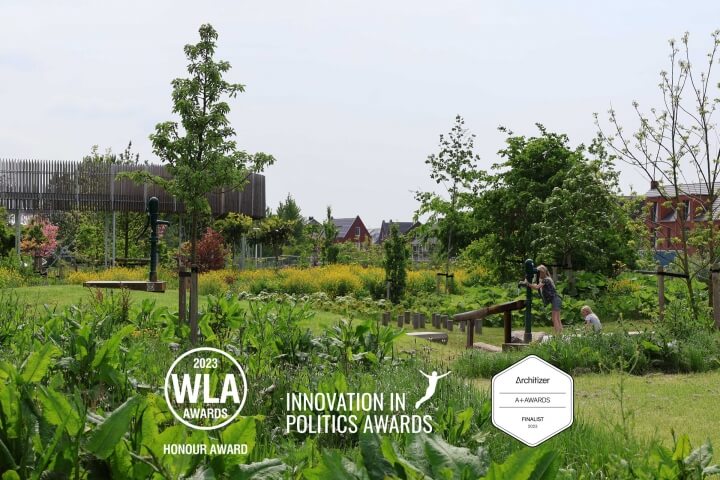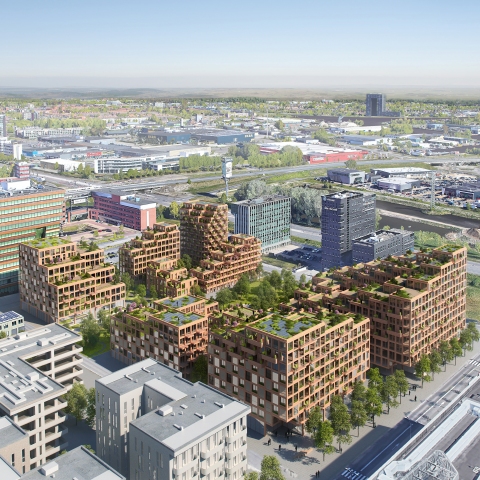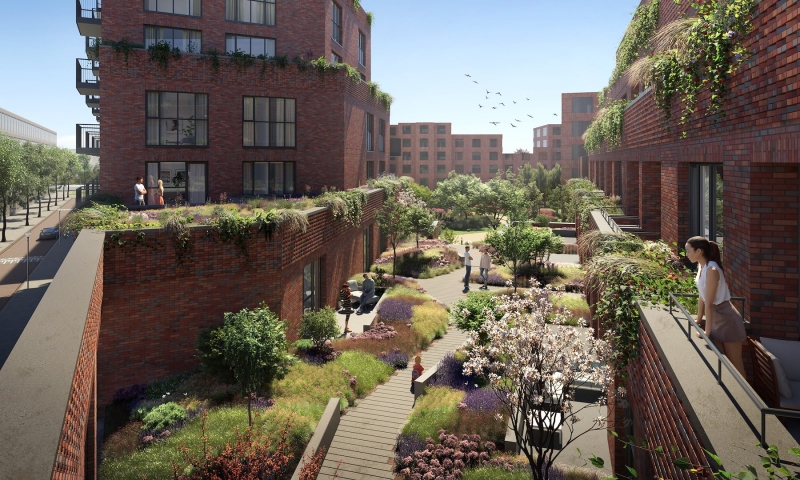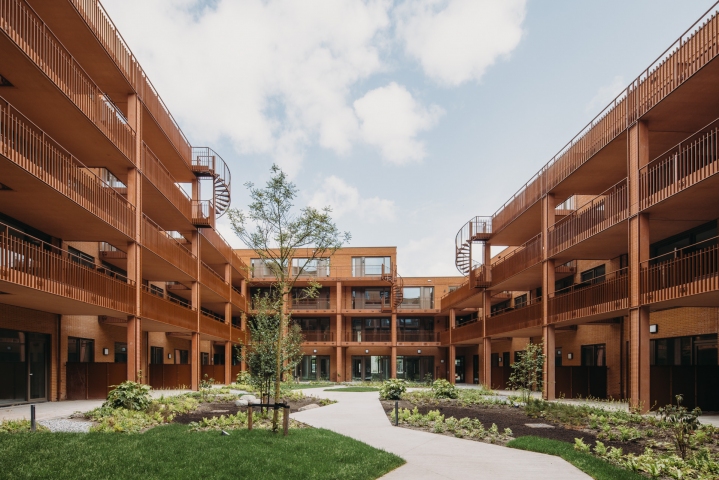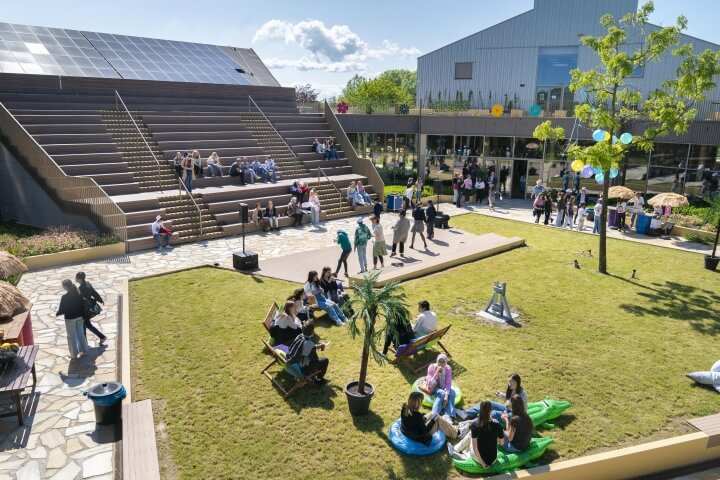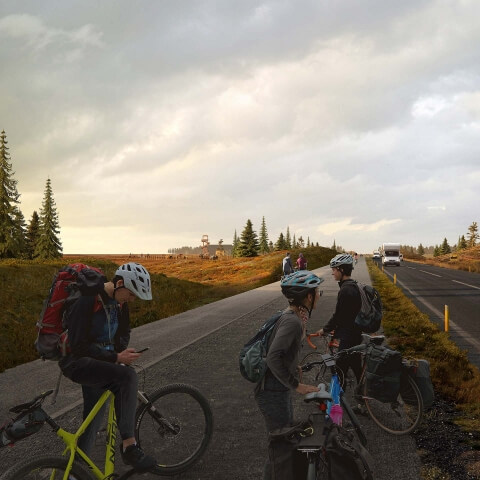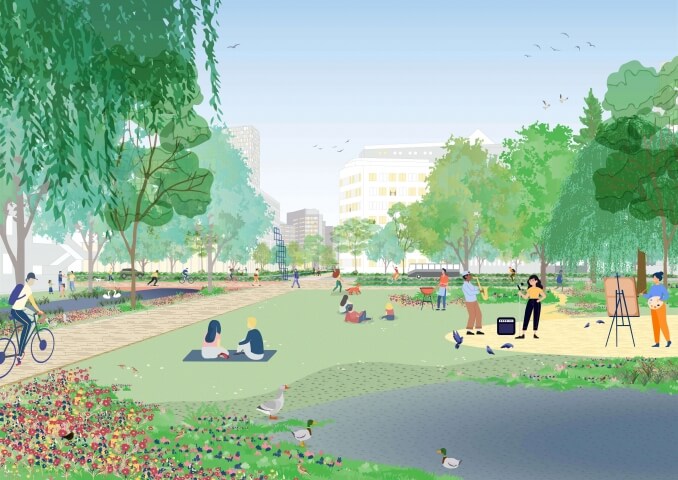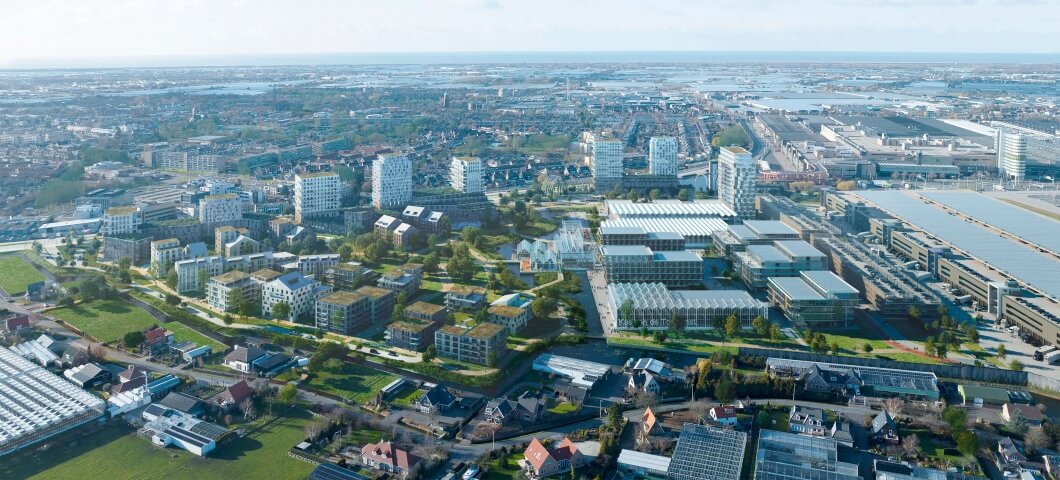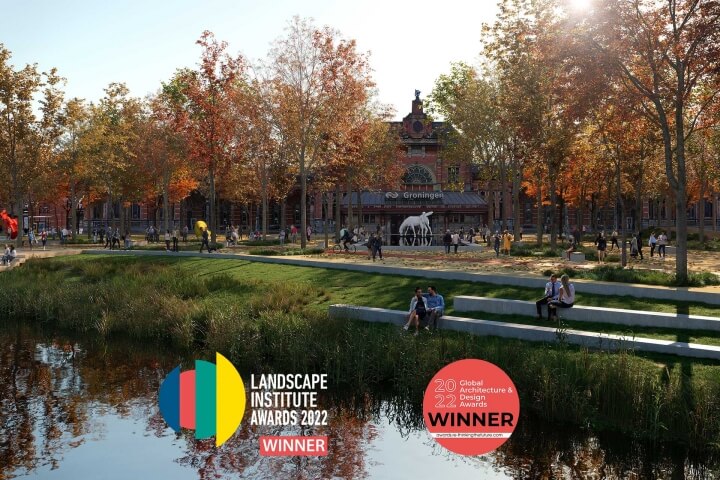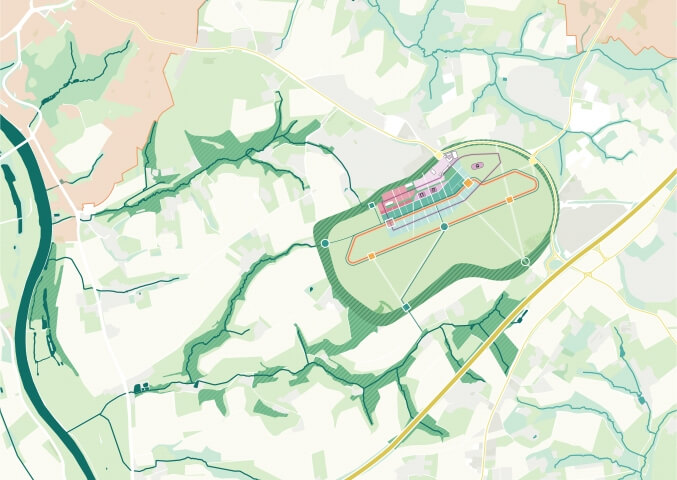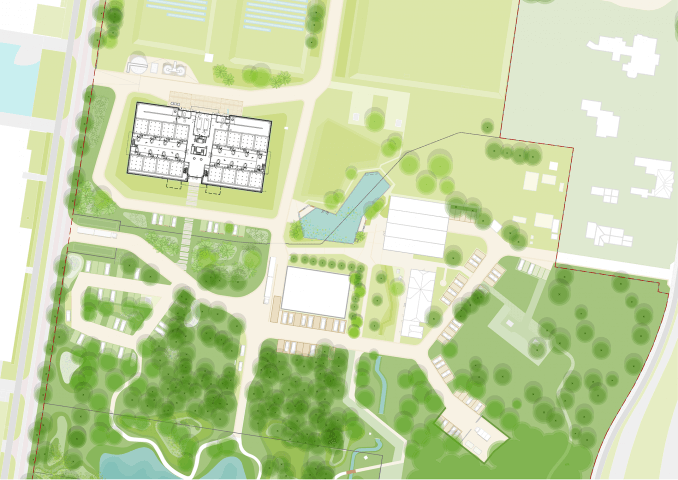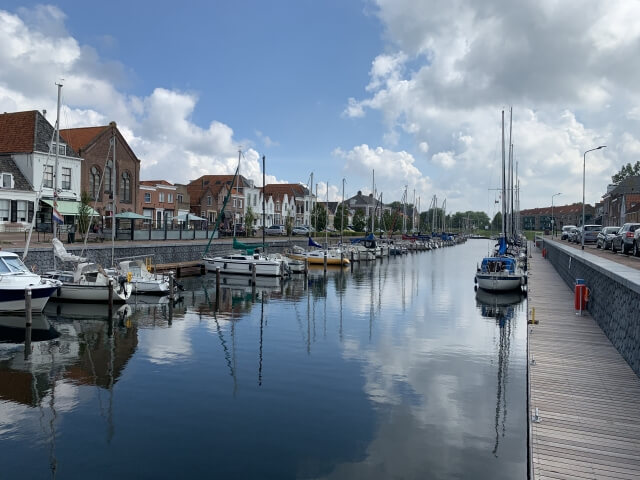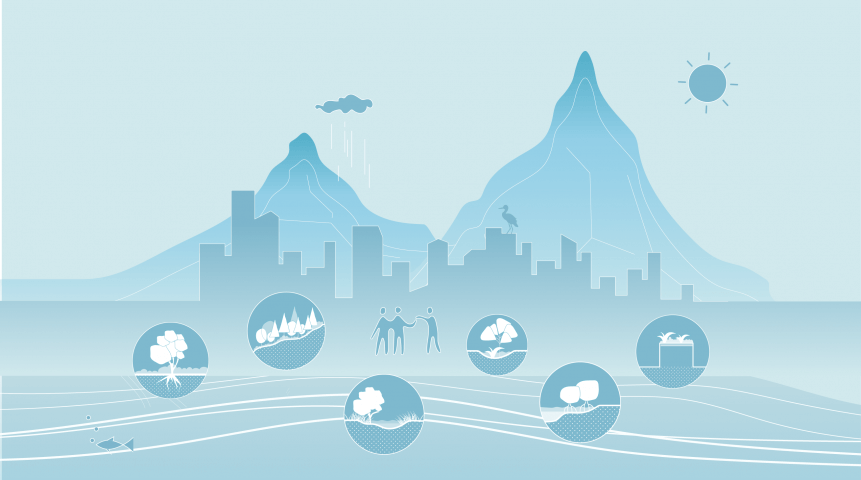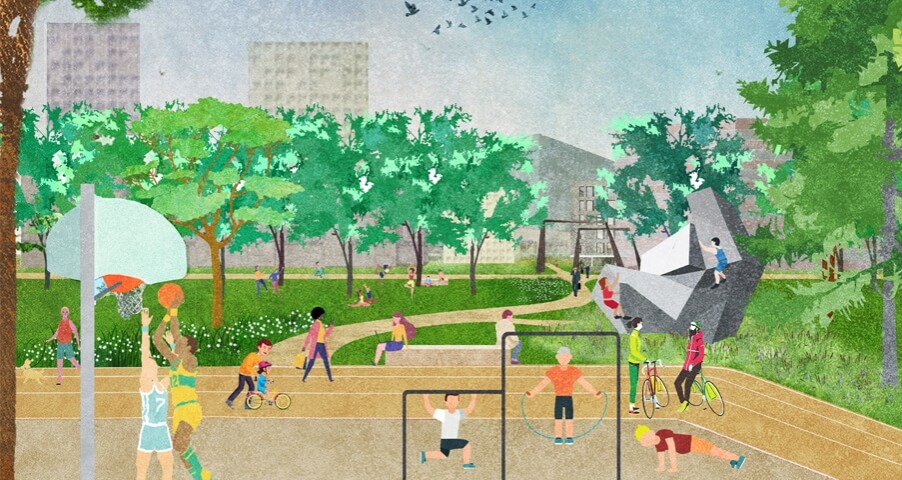Ludlstrasse Munich
Creating New Neighborhoods
The largest housing association in Munich, GEWOFAG, wants to redevelop the post war residential area around the Ludlstrasse into a vibrant mixed-use urban quarter. The plan builds on the defined urban framework: an elongated building as a sound barrier along the highway, combined with urban villas in green.

‘Neue Nachbarschaften’ transforms the proposed residential area into a collection of neighborhoods. The organization of the quarter is based on the model of a family: every single component gets a distinctive identity, and is part of a bigger entity at the same time. That bigger entity is the surrounding public realm.

By incorporating the realm into every building we shape the transition between public and private space into 3 different levels: the public, communal and private landscape.

Public landscape
Sport fields and playgrounds are realized within the public domain. Two nurseries, a nursing home, a community center and various studio spaces activate the public realm. At these particular places, paths are widened and transformed into small squares, as new reference and meeting points.



Community gardens
Several smaller neighborhoods are distinguished within the public domain: new ‘Nachbarschaften’. Two, sometimes three buildings are clustered around a central square. The surrounding ground level is slightly lifted, with an elevated seating edge, to clearly articulate the neighborhoods. The clustered buildings are designed as entities with their own character and identity. With movable chairs the green area can be tailored to the personal mood and needs of the residents, and the space is equipped with playgrounds for smaller children.



Private terraces
The new neighborhoods create a feeling of solidarity and safety, stimulate interaction and ensure the emergence of a social cohesion. Gradually sloping building sections create an optimal connection with nature and sunlight accession. Each building has a set-back with private garden, each apartment has a balcony, loggia or terrace. Through this, the green space is also extended into the buildings, getting a private character.



Year
2015
Location
Munich, Germany
Type
Masterplan, Public Space
Client
Size
3.7 ha
Awards
2015 Competition 3rd prize
Publications
ArchDaily
Architectuur.org
Architectuur.nl
Dafne
De Architect
Dutch Architectural Design School
e-architect
World Architecture News
World-Architects
World Landscape Architect
Team & partners
Michiel Van Driessche
Deborah Lambert
Marnix Vink
Carlijn Klomp
Tea Hadzizulfic
Willemijn van Manen
Laura Spenkelink
Mei Architects and Planners
Model & Objekt








